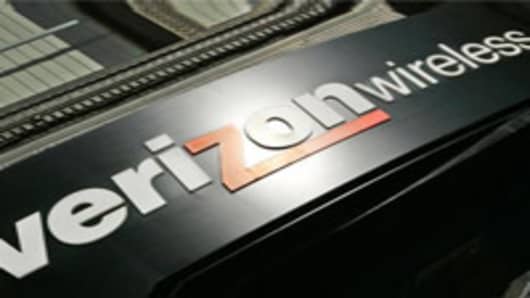Twenty three billion dollars.
That’s how much Verizon has spent in the past few years to jazz up its antiquated tangle of hardwired copper phone lines into 32 million homes, fiber-optifying them (yes, I just made up that word) for a panoply of video programming.
Seven-point-two million.
That’s how many Verizon wireline accounts have cut the cord in the past two years—despite all those fancy fiber-optics.
The sexy part of Verizon, the one that shows above the surface, is Verizon Wireless, which used acquisitions to boost is customer base 27 percent in a year to 93 million. The Internet is going all wireless and mobile and handheld, and Verizon holds an enviable position.
The fusty, flabby, unattractive part of Verizon lies beneath the surface: POTS, for plain old telephone service.
What to do? Smash ’em up! And get rid of the POTS.
Last night on CNBC’s Fast Money, we looked at the case for smashing up News Corp. , and for me the surprise was how little pushback the idea stirred. You can see that segment here.
Our “Smash ’em Up” series also has looked at recent successes and diagnosed what ails Microsoft.
Tonight, we prosecute the case for how Verizon might break itself in half, holding on to sexy and dumping the fusty. Verizon itself has been shedding high-cost, old-fashioned phone lines in more rural markets. Why not elevate that idea to a grander scale?
Got a few numbers for you:
- Verizon Wireless contributes almost 60 percentof the company’s $100 billion-plus in annual revenue—and 90 percent of the profit.
- The old wireline biz consumes 40 percent of total company assets and 56 percent of all capital spending, all to provide just 10 percent of the profits.
- The fiber-optic buildout now reaches more than 15 million homes, with 3 million-plus paying subscribers. At $23 billion, that works out to $7,666 per subscribing home. If every account were to pay $90 a month for the premium cable package, it would take Verizon seven years to recoup that initial cost.
Is it worth it? I’m thinkin’ . . . no.
Telecom execs have plenty of reasons why a smashup would be wrong. Many cell calls, at some point, travel on a fiber-optic long-haul line at some point to get to their destination. And consumers want to buy their bits by the bundle, the “three-screens” pitch (TV, laptop, cell) that the former Baby Bells had spent two decades pursuing.
Sure, but Verizon could retain long-haul fiber and sell off the home phone business; or inter-exchange deals among carriers could take care of the problem. As for offering the bundle: cross-license with other providers to round out your package.
Plus, Verizon CEO Ivan Seidenberghas extra impetus to mull more daring maneuvers: His company’s most prized possession isn’t entirely its own—Vodafone owns 45 percent of Verizon Wireless. Someday Verizon may actually start forking over a hefty chunk of that precious cellular cash flow to its London-based partner.
And that is when Verizon will need a new strategy: Buy out that partner and take full ownership of one of the best tech assets on the planet.
See more of Dennis' reasons for breaking up Verizon tonight at 5pm ET on "Fast Money" and look for tomorrow's "Smash 'Em Up" report about Disney , on-air and online.



